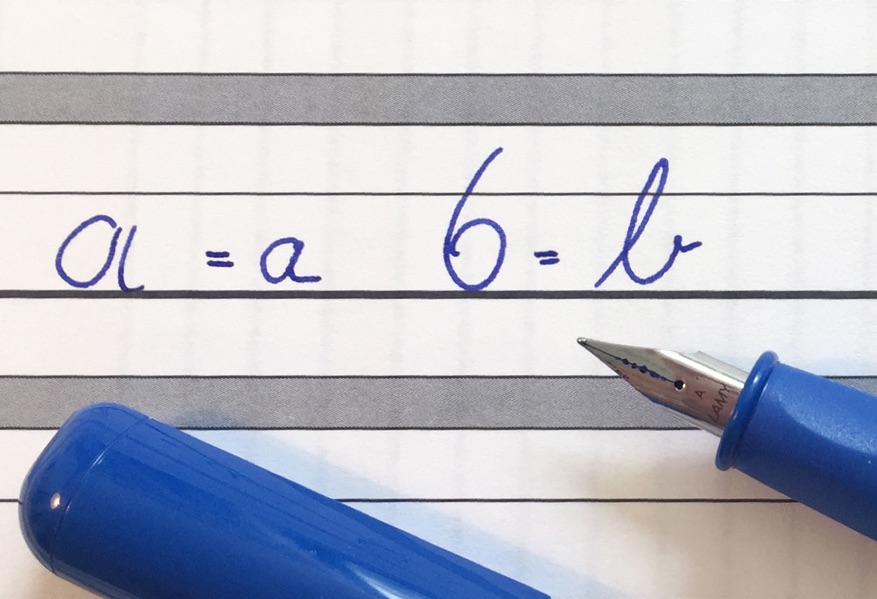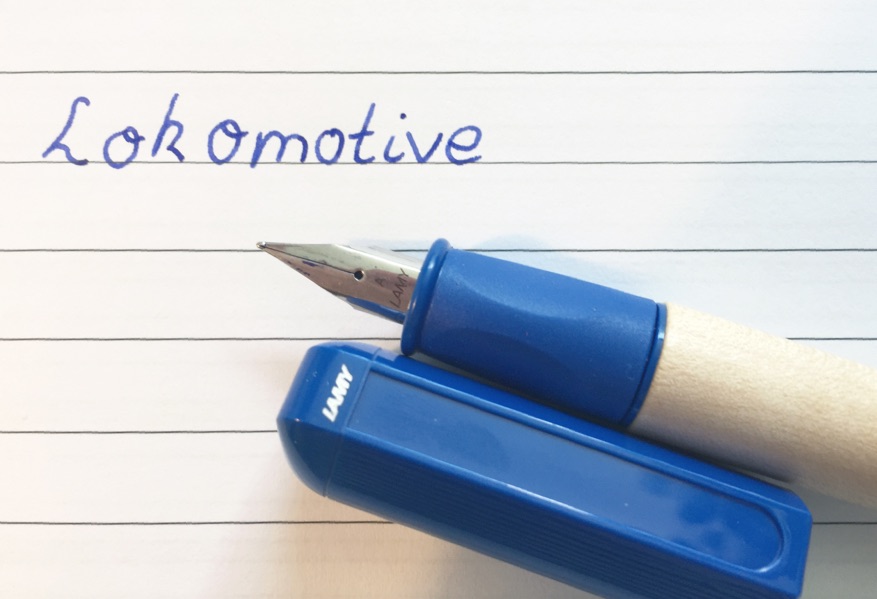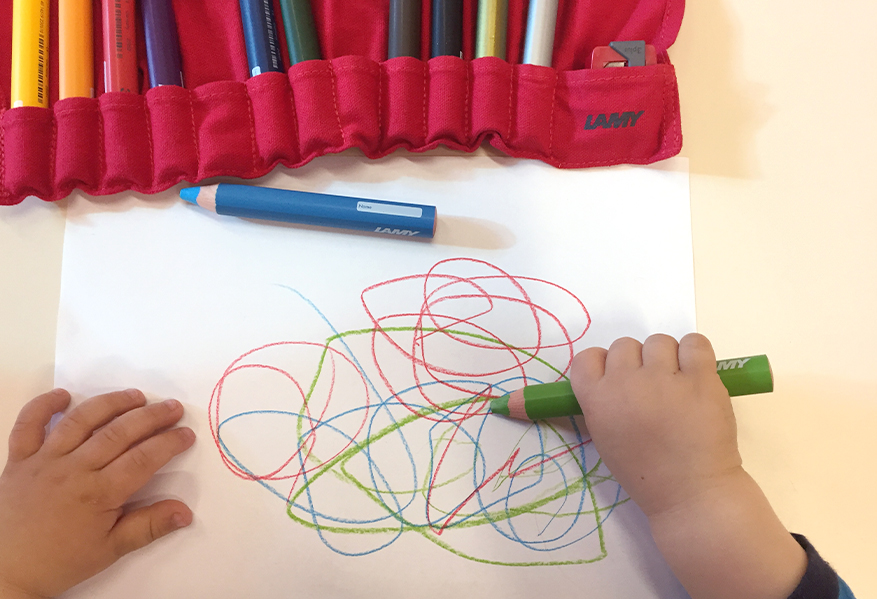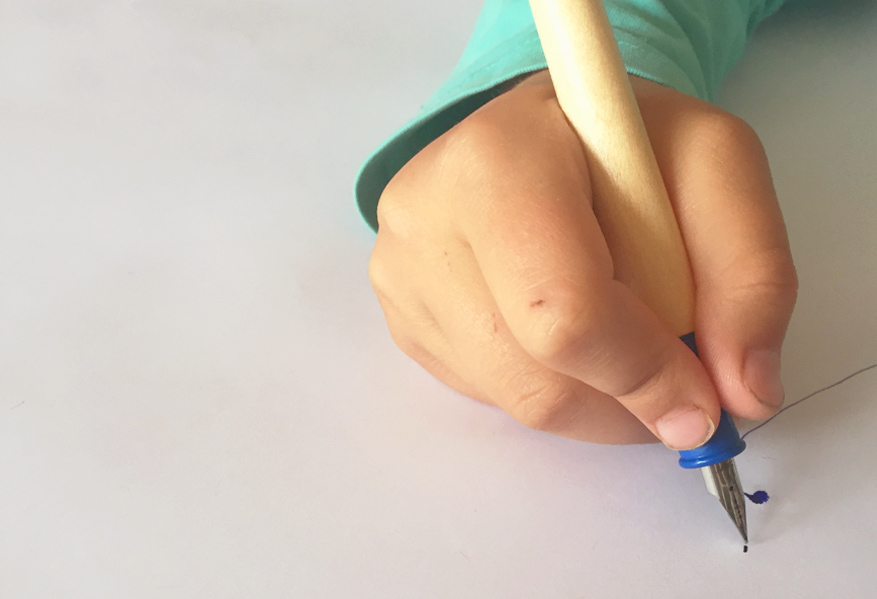Is joined up writing important for learning?
A discussion on keyboard typing, block letters and cursive handwriting
Text and image: Astrid Frevel, Lecturer in Ergotherapy
The way school learning is designed is a matter for each state. Which writing style is taught is often in the hands of teachers and can even vary from class to class within one primary school.
A uniform approach is not required by law.
Is joined up writing (also called cursive) or writing in block letters the alternative for a fast and readable handwriting?
Is keyboard typing perhaps better? How can I learn or teach good spelling?
Handwriting should generally:
- Be quick to learn and easy to apply
- Not be too complex in the learning phase
- Be quick to write
- Be easy to read and appear fluid
- Give each letter the same style
- Be able to be developed into a personal handwriting style
- Present itself coherently as a word picture
Is there any recommendation for everyone regarding writing?
Strictly speaking, there is no consistent coherent, fluid handwriting. We often take the pen off the paper in the middle of writing a word. For longer words, such as “physiologically” we lift the pen to move
it on. Or try and write "locomotive" without lifting the pen. Of course, it is easier for the reader to decipher the writing if there is no gap between the parts of a word.
The origin of cursive handwriting
Cursive handwriting was originally conceived and invented as a calligraphic art form in the 16th century for the design of special
greeting cards. From this writing, the joined up Latin source writing has developed.
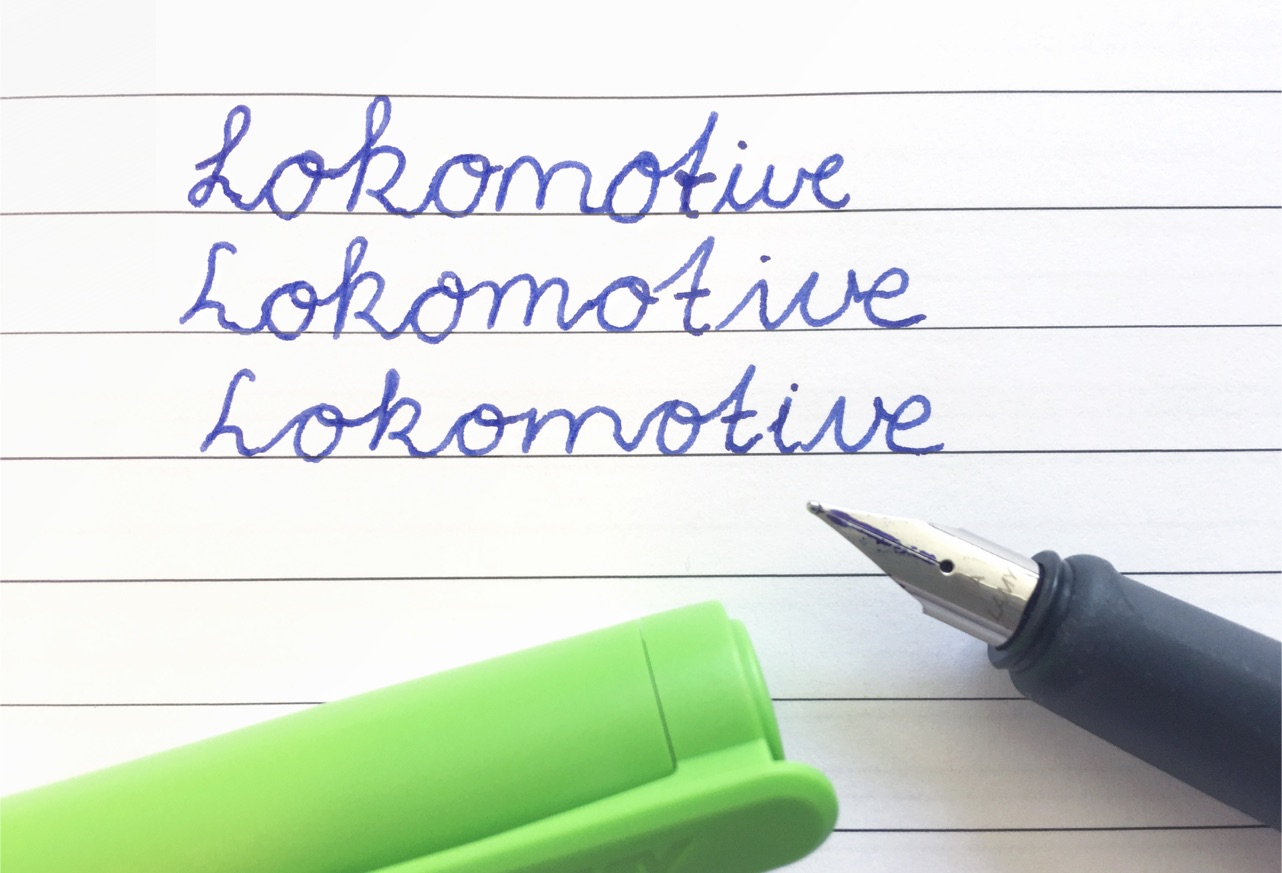
An overview of some joined up writing styles.
Block letters are the contrast to cursive handwriting.
The children here are learning their own personal handwriting by joining up the block letters.
Letters written in a complicated way are unfavourable to learning joined up writing. Here, for example, an “a” is formed by a loop and a line. The “a” can hardly be recognised due to the gap between the two
shapes. Unclear lines cannot be integrated into joined up writing either. In the long term, this will be a hindrance to a quick and legible handwriting. Unclearly written letters and words are not reliably remembered.
More examples:
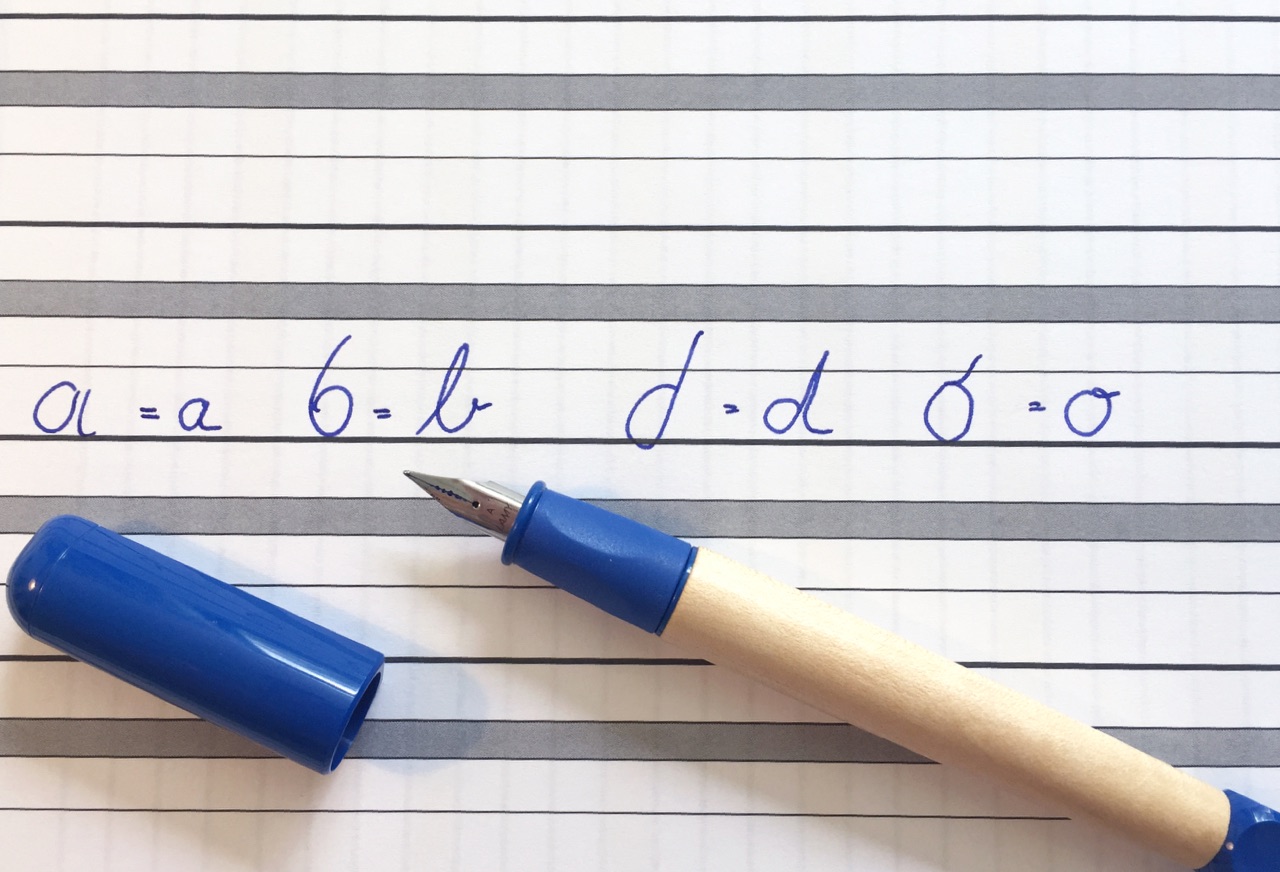
At the moment, you might get the impression that joined up handwriting is considered less important. School ministries are currently discussing whether children should change to keyboard writing as soon as possible during the writing learning phase and put less emphasis on handwriting.
Digitisation will also influence the way handwriting is written, as well as the quality of spelling. On the keyboard, the letters are generated by key touch. Each key touch feels the same, but different symbols (letters) are generated. The fine motor element, the movements that go into the handwriting in our motor memory, remain unused in keyboard writing.
Still, handwriting plays a major role in the acquisition of the written language and spelling and is less to be regarded as a mere fine motor skill. Handwriting is a complex and major achievement of the brain that connects the language centre, the motor area, cognition and other areas. This means improved networking of the neural structures that are important for successful (not just academic) learning.
When writing block letters, word arrangement problems often arise; people tend to forget a letter when they break down each word into its individual parts. When children write block letters, it often happens that the upper and lower cases are not recognised in the size ratios of the written letters. Often, the word boundaries then blur and make the gap between words disappear and children run the risk of not learning how to spell or spelling being difficult for them.
Therefore, among good handwriters, significantly more brain regions are participating than with keyboard writers. Handwriters who write fluently, coherently, and legibly make fewer spelling mistakes judging by experience.
The brain additionally saves joined up written words as a word image and does not have to break the word down into its individual parts (as with block letters or with keyboard typing). This allows the brain to use another "learning channel". The more "learning channels" are activated and the more networked learning is achieved, the easier it is for the brain to learn.
"Handwriting is, so to speak, the way into our memory."
(Quote by Manfred Spitzer, psychiatrist and brain researcher)
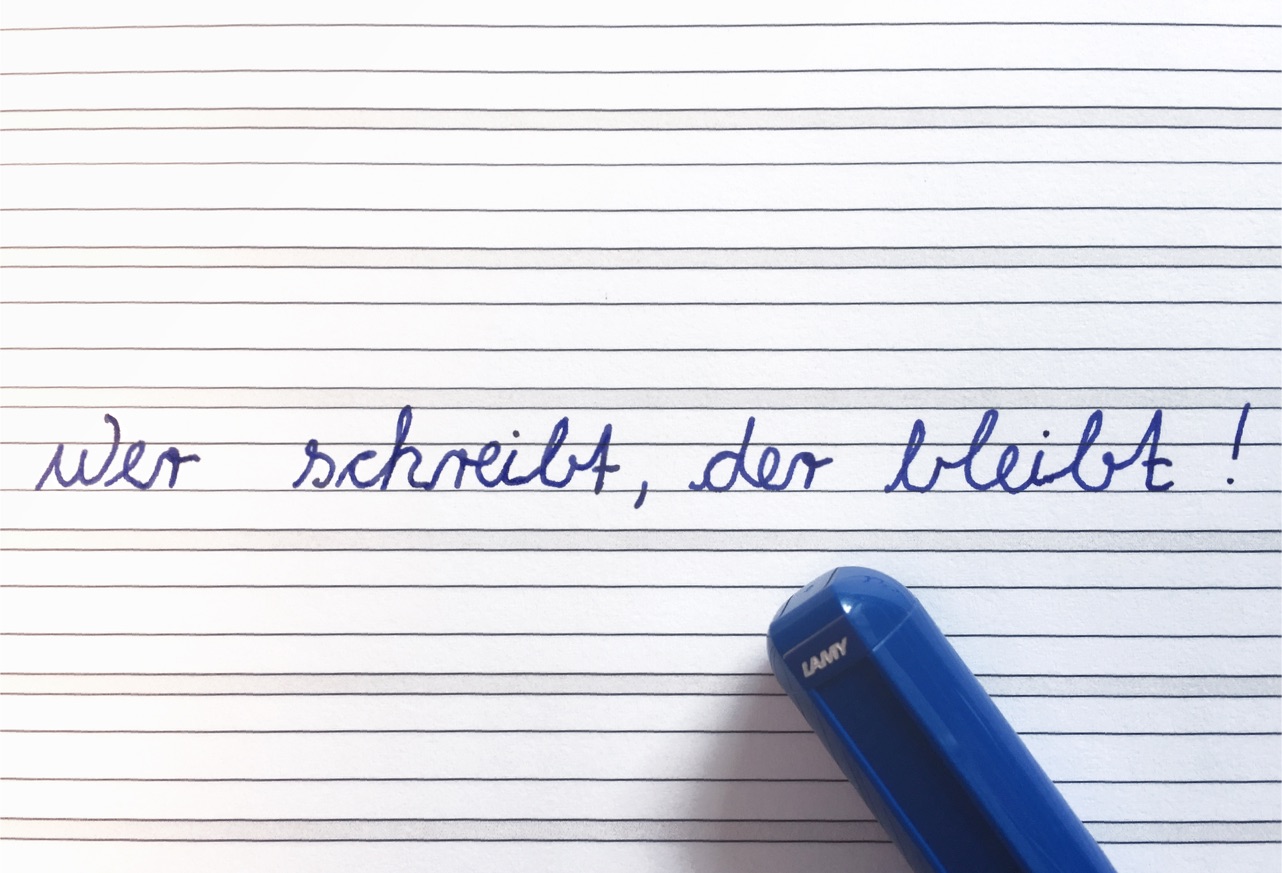
“Verba volant, scripta manent” (spoken words fly away, written words remain)
